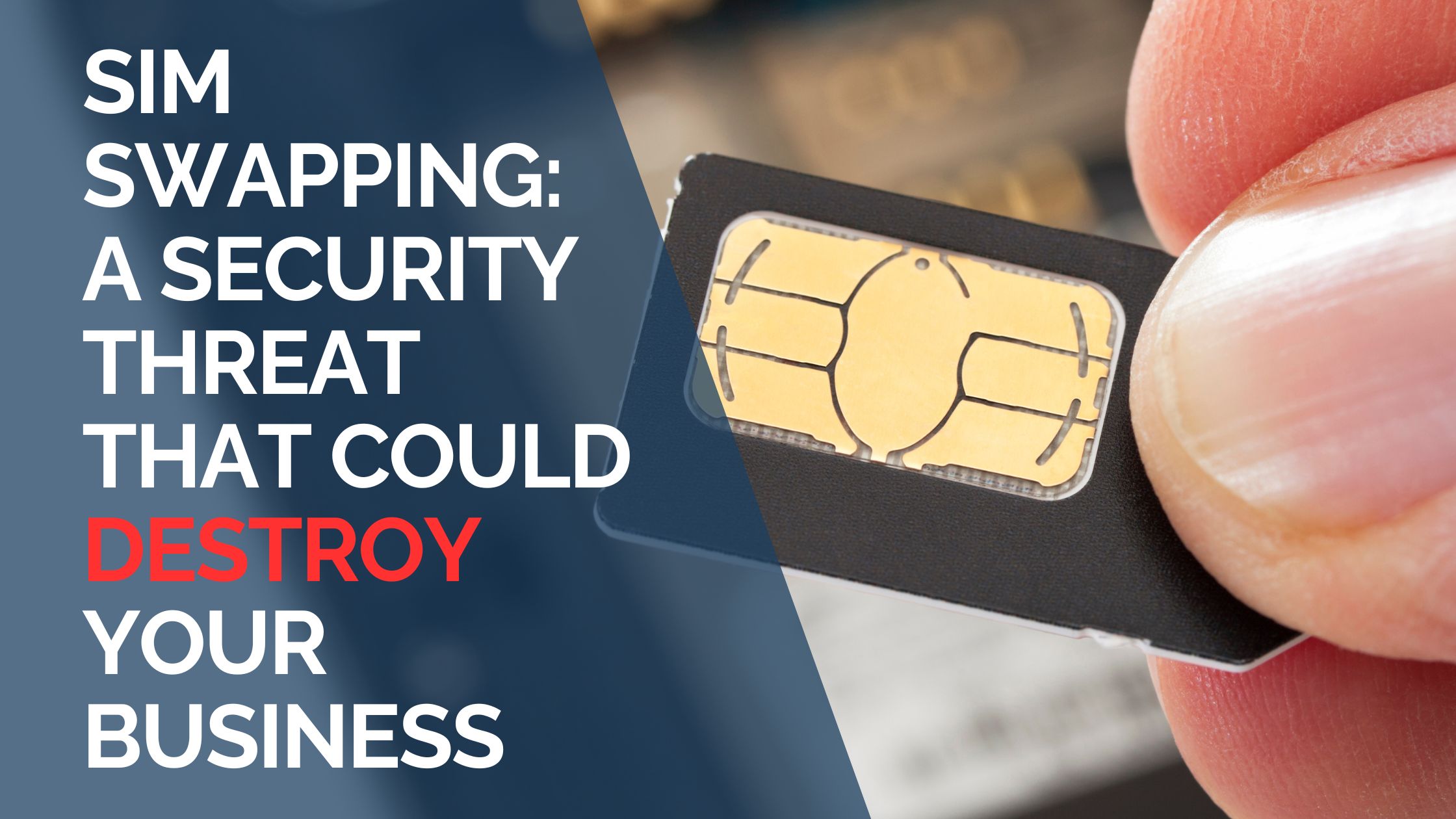Every business leader worries about hackers, but many don’t realize the biggest threat could be sitting quietly in their employee’s pocket.
It’s called SIM swapping, and it’s not just a tech issue—it’s a business risk.
What is SIM Swapping (and Why Should You Care)?
SIM swapping is when a criminal tricks a phone company into giving them control of someone else’s phone number.
Once they have it, they start getting texts and calls meant for the victim—including two-factor authentication codes for bank logins, email, payroll systems, or even Microsoft 365.
If they get access to one email account, they can reset passwords, impersonate employees, and start doing serious damage.
Real Talk: Why This Matters to Your Business
You might think this is something that only happens to celebrities or tech nerds, but here’s the truth:
- An employee’s stolen number can unlock your business bank account.
- An executive’s email can be used to trick your staff into wiring money.
- A payroll login can lead to direct deposits being rerouted.
And it doesn’t take a high-end hacker.
This stuff is being traded in underground forums like fast food orders.
How to Protect Your Business (Without Becoming an IT Expert)
Here’s what you can do right now to make SIM swapping a lot harder for the bad guys:
1. Don’t Rely on Text Messages for Security
That text message with a login code? It’s easy to steal with SIM swapping. Switch your team over to an authenticator app like Microsoft Authenticator or Google Authenticator.
Even better? Use hardware keys for target roles (finance, executives, IT staff).
2. Lock Down Your Phone Accounts
Call your mobile provider and set up a PIN or password on your account. Do this for any company phones, and encourage your team to do the same.
It makes it way harder for someone to pretend to be you.
3. Talk to Your Team About This
Make SIM swapping a topic at your next team meeting. People don’t know what they don’t know.
Just five minutes of awareness can stop a major security headache. Or better yet, share this article with your team and start the discussion.
4. Use Business Tools That Let You See What’s Going On
Make sure your IT partner is using tools that alert you to strange logins or location changes.
If someone logs into your systems from a new country at 2 a.m., someone should know about it right away.
Bottom Line:
Cybersecurity isn’t just about firewalls and antivirus software anymore.
Criminals are looking for the easiest way in—and sometimes that’s your mobile phone.
If your business handles money, health data, sensitive emails, or even just a lot of client trust, it’s time to take SIM swapping seriously.




